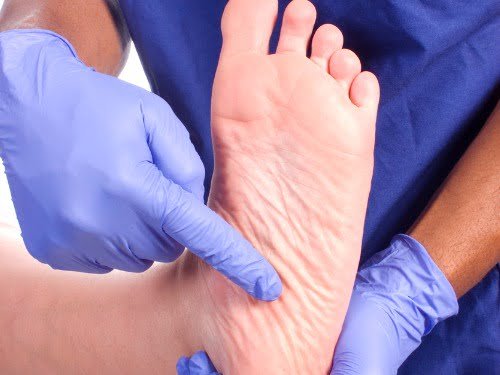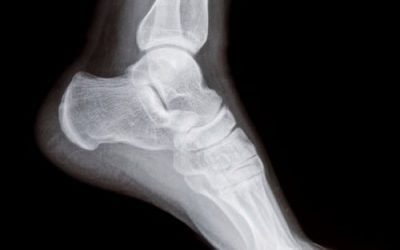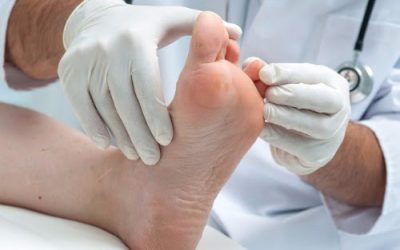Some of the most recognizable and debilitating problems associated with CMT are in the feet and many CMT patients have met with a podiatrist at least once since their diagnosis. Even though most people seek out podiatrists for occasional treatment, regular visits can drastically improve the way the podiatrist provides care. Read the information below to find out how consistent podiatric treatment can alleviate pain and soothe symptoms in CMT patients. Despite these benefits, it is possible that the most crucial role podiatrists can play is in the diagnosis of CMT. To learn more about how a podiatrist can diagnosis and treat CMT, see the information below and read our articles from Dr. Hal Ornstein, the podiatrist leading the field in CMT treatment and awareness.
How can a podiatrist treat my CMT?
The most important thing to recognize is the unique perspective podiatrist can have in detecting and treating CMT. In most cases, symptoms are present in the first decade of life but are often misdiagnosed by pediatricians because the symptoms are so mild. Because the feet are usually the first and best indication of the progression of the disease, podiatrists are better equipped to detect these symptoms than general practitioners and other specialists.
Once diagnosed, podiatrists provide extended care so patients feet and ankles are regularly monitored and treated. This kind of medical treatment often alleviates pain and avoids issues that many people with CMT thought were unavoidable. Podiatrists can fit patients with orthotics, prescribe medications to alleviate pain, and consult with patients and other physicians on how to prevent foot problems.
When podiatrists treat people with CMT, they attempt to (relieve the strain and fatigue inflicted by the deforming forces associated with CMT. They do this by prescribing custom orthotic devices, medications, and implementing a variety of treatments for the feet and ankles. They can perform minor surgeries, but usually podiatrists do not perform surgeries to correct conditions brought about by CMT (i.e., clawtoes, hammertoes, ruptured Achilles, and other ligaments and tendons deformities). Orthopedic surgeons tend to perform these procedures, but podiatrists can still play an important role in the procedure. They can consult with patients when weighing surgical options and provide orthopedists with detailed histories of the patients conditions.
People with CMT often ignore their symptoms and it is easy for a fungus to grow and infections to flare up without podiatric intervention. Another area people with CMT fail to consider is the importance of proper orthotics and footwear and this is where podiatrists can help prescribe and monitor custom orthotic devices for patients. Simply having proper fittings and monitoring by a podiatrist can avoid a lot of pain and surgeries. Podiatrists can prescribe or fit patients with inserts called orthotics which help correct and individuals walking patterns. An orthopedist or another specialist can also do this, but it is beneficial to have a podiatrist closely monitor how the feet and walking patterns are adjusted with the orthotics and/or bracing devices.
Visit our surgery page-surgery page to learn more about orthopedic surgery and orthopedic surgeons (link to surgery page on the help4cmt.com site) For more orthoic info, see our articles on assistive devices or ask your podiatrist about potential options
How should people with CMT care for their feet?
People with CMT often ignore their symptoms and tolerate unnecessary pain because they do not properly care for their feet. Basic foot care at home, supplemented with regular podiatry visits, can mitigate many of the most troublesome CMT symptoms. See below some measures you can take at home and to get a more personal tutorial, consult your podiatrist.
BASIC FOOT CARE GUIDELINES
Persons with CMT, diabetes, poor circulation, or heart problems should not treat their own feet, because they are more prone to infection.
Do not ignore foot pain; it is not normal. If you experience any type of persistent pain in the foot or ankle, please contact our office. Just because CMT is characterized by foot pain, it does not mean that the pain cannot be lessened.
Wash your feet regularly, especially between the toes, but be sure to dry them completely.
Trim toenails straight across, but not too short. Be careful not to cut nails in corners or on the sides; this can lead to ingrown toenails.
Inspect your feet regularly. Pay attention to changes in color and temperature. Look for thick or discolored nails (a sign of developing fungus), and check for cracks or cuts in the skin. Peeling or scaling on the soles of feet may indicate Athlete’s Foot.
Pay attention to areas that have consistent redness, blisters, and / or abrasions as this may indicate ill-fitting orthotics/shoes or abnormal gait.
Make sure that your shoes fit properly. Purchase new shoes later in the day when feet tend to be at their largest, and replace worn out shoes as soon as possible.
WHEN TO CALL A DOCTOR
Contact a podiatrist if you experience any of the following:
-Persistent pain in your feet or ankles, or changes in the nails or skin on your foot:
-Foot or ankle symptoms that do not improve after two weeks of treatment with a nonprescription product.
-Spreading of an infection from one area of the foot to another, such as under the nail bed, skin under the nail, the nail itself, or the surrounding skin.
-Heel pain accompanied by a fever, redness (sometimes warmth), or numbness; tingling in the heel; persistent heel pain without putting any weight or pressure on your heel; or pain that is not alleviated by ice or OTC painkillers (such as aspirin, and ibuprofen).
-Thickening toenails that cause discomfort.
There are signs of bacterial infection, including:
-Increased pain, swelling, redness, tenderness, or heat.
-Red streaks extending from the affected area.
-Discharge or pus from an area on the foot.
What are some of the classic symptoms of the CMT foot and how can they be treated?
Please visit our detailed article on CMT foot care here: Classic CMT Foot Symptoms and How to Treat Them








Both my feet are extremely ticklish, so much that I can let NO ONE touch them. I need a toenail trim desperately. Is there any way I can have one foot anesthetised so to facilitate this?
Crikey! My mother-in-law has been dealing with a lot of pain all over her left foot since last week. I must bring her to see a specialist immediately for further treatment. Meanwhile, I have to thank you for informing us of the role of podiatrists in offering personalized orthotic medications. https://www.angelagreenpodiatry.com.au/ndis
Thank you for this site. I have CMT type 1A. I live in a very rural area of Oregon and do not have a podiatrist.
I am wheelchair bound and basically have non-functioning feet. Is this something that I could use a podiatrist for, or would I need to find some sort of specialist that has experience with disabled people? All I am trying to do is prevent my feet from becoming more atrophied.
http://infootdocs.com
Very helpful site. At last some answers to the many questions.
Thank you Cathy! So happy you find our website informative. Please check back regularly for new information.